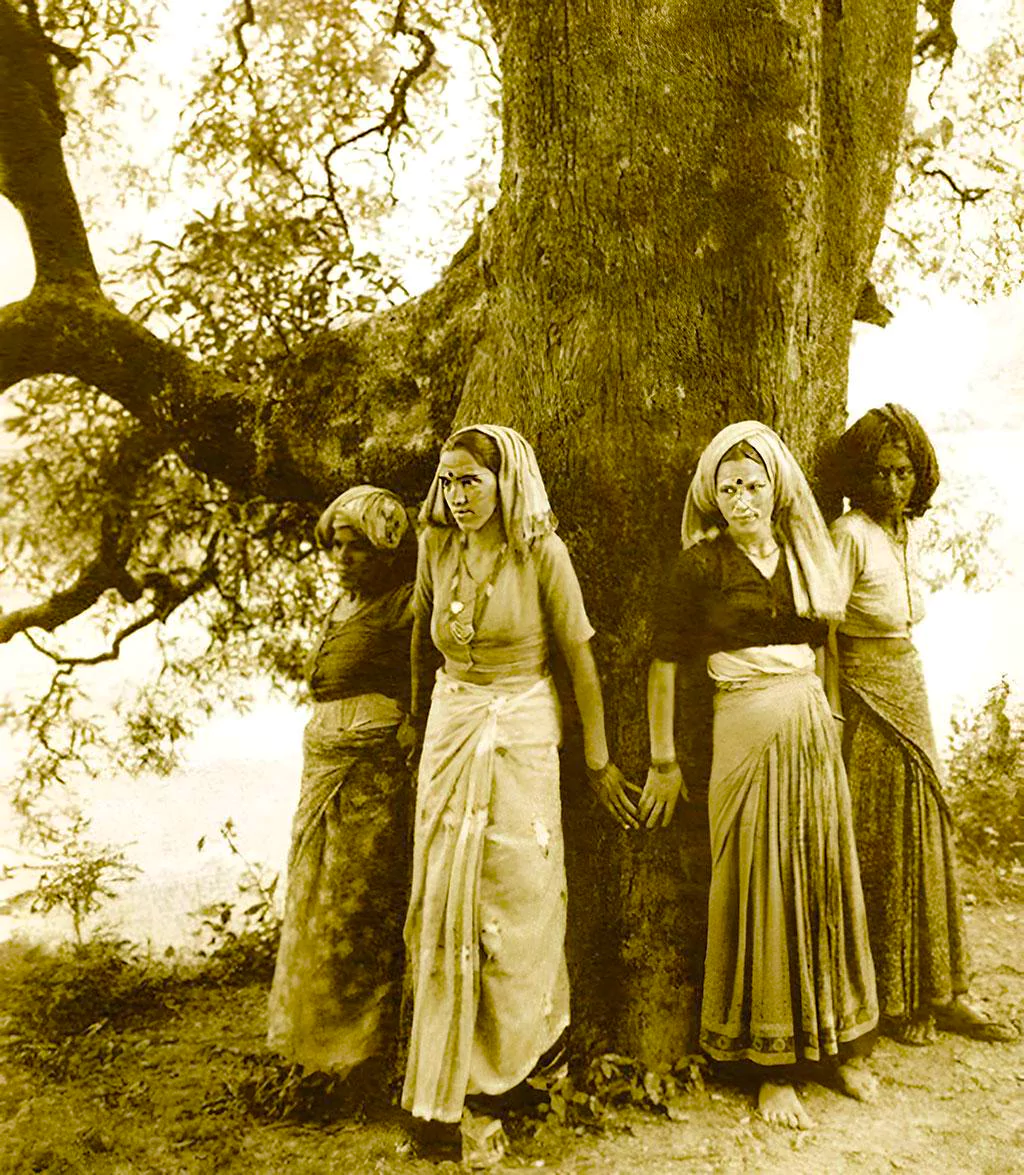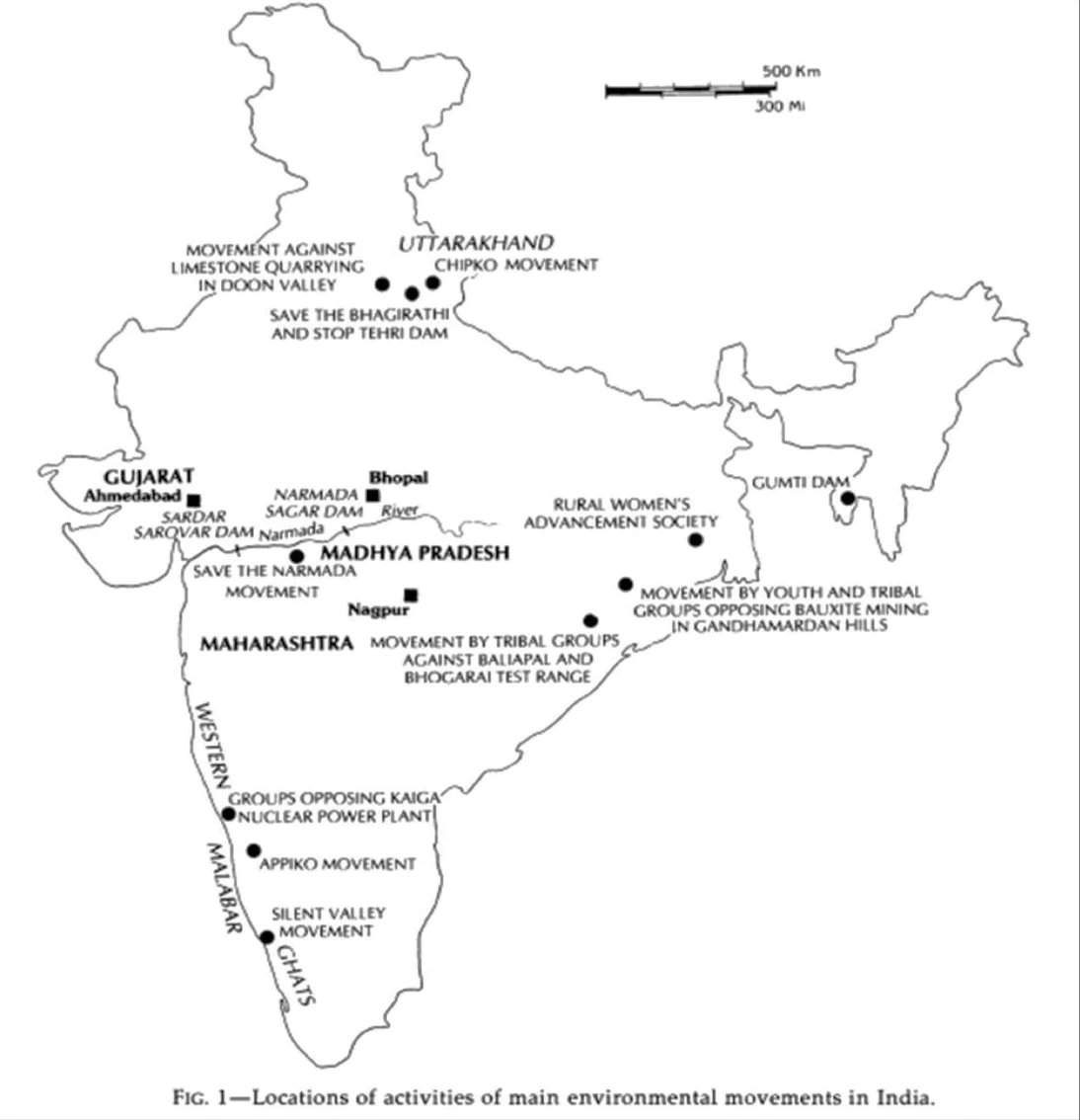Context
Recently, Chipko Movement marked the Completion of its 50 Years of Landmark Environmental Conservation movement .
About Chipko Movement

It is a non violent Environment Conservation Movement. The term Chipko refers to the act of hugging trees.
- On April 24, 1973, the Gandhian social worker Chandi Prasad Bhatt rallied the women of Mandal in the Garhwal division of what was still part of Uttar Pradesh (now Uttarakhand) to stop Symonds (a company manufacturing sports products) from cutting down trees.
- Locals and especially women hugged the trees when approached by loggers to prevent them from being cut.
- By hugging the trees they sent a clear message- “We, our nature and us, are one”.
- The women embraced the trees and The action started what has become famous as the Chipko movement.
- Other Prominent Leaders of Chipko Movement in Uttarakhand: Sundar Lal Bahuguna, Gaura Devi, Ukha Devi, Jutti Devi, Bala Devi etc
- This movement, which began in the early 1970s, has since become a symbol of grassroots activism and has inspired similar movements around the country as well as the world.
Enroll now for UPSC Online Course
Genesis of the Chipko Movement in india
- From Jodhpur’s Khejarli village in 1730: The Jodhpur king had ordered wood for the masonry work at the fort, following which his Diwan Girdhardas Bhandari reached Khejadli village, dotted with ‘khejri’ trees.
- The villagers from the Bishnoi community, led by Amrita Devi, had protested the move. Amrita Devi embraced a tree, followed by her three daughters. Seeing this, the villagers came forward one by one and started embracing the trees.
- But on the order of Diwan, the soldiers hacked their heads. 363 persons of the Bishnoi community had laid down their lives to save the ‘khejri’ trees (Prosopis cineraria).
- The king was forced to step back after the locals laid down their lives to protect the trees.
Appiko Movement: Hugging Trees for a Greener Tomorrow
- The Appiko Movement ( ‘Appiko,’ which means to hug.), inspired by the Chipko Movement, was initiated in Salkani forest in Sirsi taluk, Uttar kannada district, Karnataka, India, in 1983 to protect the forests of the region.
- Hundreds of men, women, and children embraced the trees, forcing the woodcutters to halt & They maintained a vigil in the forest for six weeks until forest officials assured them that trees would be cut scientifically and in accordance with the district’s working plan.
|
Causes for Movement
- During the 1970s, rampant deforestation in Uttarakhand led to severe flooding, causing over 200 deaths & the degradation of natural resources.
- The devastating consequences of large-scale logging, including soil erosion, loss of biodiversity, and adverse effects on local livelihoods, prompted the villagers to rise against the exploitation of their cherished natural heritage.
Key figures and leaders of the Chipko Movement
- Chandi Prasad Bhatt: Chandi Prasad Bhatt (a Gandhian social activist and environmentalist) founded an organization called Dasholi Gram Swarajya Mandal (DGSM)
- He was instrumental in organizing local communities, particularly women, to participate in the movement.
- Bhatt played a crucial role in spreading the message of nonviolent resistance and encouraging people to take a stand against deforestation.
- Sunderlal Bahuguna: Sunderlal Bahuguna is often considered the main leader and spokesperson of the Chipko Movement.
- He was an environmental activist inspired by Gandhian philosophy, championing forest conservation and sustainable development.
- He raised awareness about protecting the environment with the motto “Ecology is the permanent Economy.”
- Gaura Devi: In the peaceful protest of Chipko Movement, she and other women from Reni Village hugged trees, halting loggers & made history by inspiring others across India.
Philosophy and Impact of the Chipko Movement
- Roots in Gandhian Philosophy:
- The Chipko Movement was deeply influenced by Gandhian principles of non-violence and living in harmony with nature.
- It exemplified the synergy between humans and nature observed in Indian villages.
- Empowerment of Local Communities:
- The movement aimed to empower local communities and ensure their participation in decision-making regarding natural resources.
- It challenged exploitative practices by outside contractors and advocated for inclusive forest management.
- Impact and Influence:
- The Chipko Movement inspired similar movements across India and internationally, such as the Narmada Bachao Andolan and the Silent Valley Movement.
- It led to policy changes in India, including stricter regulations against illegal deforestation and recognition of indigenous rights.
- Role of Indigenous Community:
- The movement showcased the power of non-violent, community-based activism and highlighted the role of indigenous peoples in sustainable development.
- Ecofeminism:
- Women played a significant role in the preservation of nature, leading to the rise of eco-feminists like Vandana Shiva.

Enroll now for UPSC Online Classes
Relevance of the Chipko Movement in Present Time
- Global Adoption strategy: Principles of nonviolent resistance and community participation from the Chipko Movement have been adopted by environmental activists globally.
- Its principles of sustainability, community participation, and nonviolent resistance are crucial in combating climate change and protecting ecosystems.
- Grass Roots Planning & Forest Management: Reflection on the movement’s achievements serves as a guide for grassroots-level actions and inclusive planning processes.
- In 2024, the Chipko Movement remains an inspiration for collective action in addressing environmental challenges.
Also Read: India’s Path To A Greener Future In The Globalization Age
![]() 23 Apr 2024
23 Apr 2024


